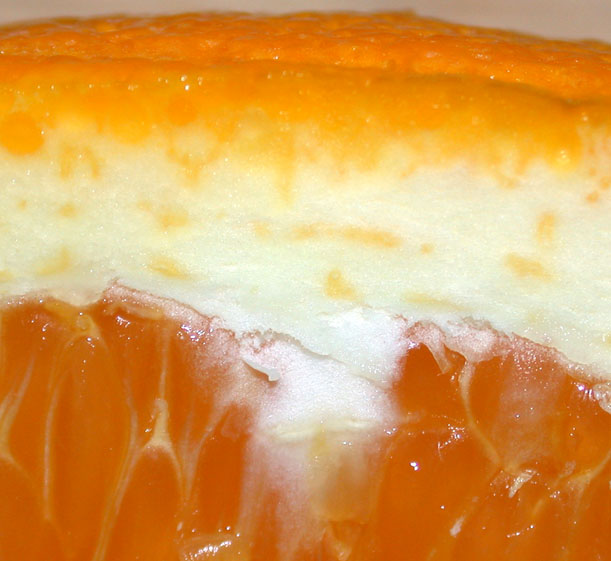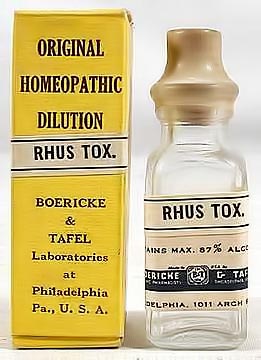|
Modified Citrus Pectin
Modified citrus pectin (also known as citrus pectin, and MCP) is a modified, more digestible form of pectin. It is obtained from the peels, seeds and pulp of citrus fruits using a chemical extraction process. In general, pectin is a gel-forming polysaccharide from plant cell walls, especially apple and citrus fruits. Pectin is a type of viscous dietary fiber and varies in the length of polysaccharide chains. Although pectin is not digestible by humans, it can be treated to create smaller fiber fragments to increase absorbability across the small intestine epithelium. Description Modified citrus pectin (also known as depolymerized pectin, fractioned pectin, modified pectin, pH-modified pectin, low molecular weight pectin, and MCP) is a more digestible form of pectin. Modified citrus pectin is composed predominantly of D-polygalacturonates, which are more easily absorbed by the human digestive system. Modified citrus pectin is promoted and sold as a dietary supplement. Safety ... [...More Info...] [...Related Items...] OR: [Wikipedia] [Google] [Baidu] |
Pectin
Pectin ( grc, πηκτικός ': "congealed" and "curdled") is a heteropolysaccharide, a structural acid contained in the primary lamella, in the middle lamella, and in the cell walls of terrestrial plants. The principal, chemical component of pectin is galacturonic acid (a sugar acid derived from galactose) which was isolated and described by Henri Braconnot in 1825. Commercially produced pectin is a white-to-light-brown powder, produced from citrus fruits for use as an edible gelling agent, especially in jams and jellies, dessert fillings, medications, and sweets; and as a chemical stabiliser in fruit juices and milk drinks, and as a source of dietary fiber. Biology Pectin is composed of complex polysaccharides that are present in the primary cell walls of a plant, and are abundant in the green parts of terrestrial plants. Pectin is the principal component of the middle lamella, where it binds cells. Pectin is deposited by exocytosis into the cell wall via vesicle ... [...More Info...] [...Related Items...] OR: [Wikipedia] [Google] [Baidu] |
Peel (fruit)
Peel, also known as rind or skin, is the outer protective layer of a fruit or vegetable which can be peeled off. The rind is usually the botanical exocarp, but the term exocarp also includes the hard cases of nuts, which are not named peels since they are not peeled off by hand or peeler, but rather shells because of their hardness. A fruit with a thick peel, such as a citrus fruit, is called a hesperidium. In hesperidia, the inner layer (also called '' albedo'' or, among non-botanists, ''pith'') is peeled off together with the outer layer (called flavedo), and together they are called the peel. The flavedo and albedo, respectively, are the exocarp and the mesocarp. The juicy layer inside the peel (containing the seeds) is the endocarp. Uses Depending on the thickness and taste, fruit peel is sometimes eaten as part of the fruit, such as with apples. In some cases the peel is unpleasant or inedible, in which case it is removed and discarded, such as with bananas or ... [...More Info...] [...Related Items...] OR: [Wikipedia] [Google] [Baidu] |
Juice Vesicles
The juice vesicles, also known as citrus kernels, (in aggregate, citrus pulp) of a citrus fruit are the membranous content of the fruit's endocarp. All fruits from the Citranae subtribe, subfamily Aurantioideae, and family Rutaceae have juice vesicles. The vesicles contain the juice of the fruit and appear shiny and sacklike. Vesicles come in two shapes: the superior and inferior, and these are distinct. Citrus fruit with more vesicles generally weighs more than those with fewer vesicles. Fruits with many segments, such as the grapefruit or pomelo, have more vesicles per segment than fruits with fewer segments, such as the kumquat and mandarin. Each vesicle in a segment in citrus fruits has approximately the same shape, size, and weight. About 5% of the weight of an average orange is made up of the membranes of the juice vesicles. Juice vesicles of the endocarp contain the components that provide the aroma typically associated with citrus fruit. These components are also found in t ... [...More Info...] [...Related Items...] OR: [Wikipedia] [Google] [Baidu] |
Citrus Fruit
''Citrus'' is a genus of flowering trees and shrubs in the rue family, Rutaceae. Plants in the genus produce citrus fruits, including important crops such as oranges, lemons, grapefruits, pomelos, and limes. The genus ''Citrus'' is native to South Asia, East Asia, Southeast Asia, Melanesia, and Australia. Various citrus species have been used and domesticated by indigenous cultures in these areas since ancient times. From there its cultivation spread into Micronesia and Polynesia by the Austronesian expansion (c. 3000–1500 BCE); and to the Middle East and the Mediterranean (c. 1200 BCE) via the incense trade route, and onwards to Europe and the Americas. History Citrus plants are native to subtropical and tropical regions of Asia, Island Southeast Asia, Near Oceania, and northeastern Australia. Domestication of citrus species involved much hybridization and introgression, leaving much uncertainty about when and where domestication first happened. A genomic, phylogenic ... [...More Info...] [...Related Items...] OR: [Wikipedia] [Google] [Baidu] |
Polysaccharide
Polysaccharides (), or polycarbohydrates, are the most abundant carbohydrates found in food. They are long chain polymeric carbohydrates composed of monosaccharide units bound together by glycosidic linkages. This carbohydrate can react with water (hydrolysis) using amylase enzymes as catalyst, which produces constituent sugars ( monosaccharides, or oligosaccharides). They range in structure from linear to highly branched. Examples include storage polysaccharides such as starch, glycogen and galactogen and structural polysaccharides such as cellulose and chitin. Polysaccharides are often quite heterogeneous, containing slight modifications of the repeating unit. Depending on the structure, these macromolecules can have distinct properties from their monosaccharide building blocks. They may be amorphous or even insoluble in water. When all the monosaccharides in a polysaccharide are the same type, the polysaccharide is called a homopolysaccharide or homoglycan, but whe ... [...More Info...] [...Related Items...] OR: [Wikipedia] [Google] [Baidu] |
Dietary Fiber
Dietary fiber (in British English fibre) or roughage is the portion of plant-derived food that cannot be completely broken down by human digestive enzymes. Dietary fibers are diverse in chemical composition, and can be grouped generally by their solubility, viscosity, and fermentability, which affect how fibers are processed in the body. Dietary fiber has two main components: soluble fiber and insoluble fiber, which are components of plant-based foods, such as legumes, whole grains and cereals, vegetables, fruits, and nuts or seeds. A diet high in regular fiber consumption is generally associated with supporting health and lowering the risk of several diseases. Dietary fiber consists of non-starch polysaccharides and other plant components such as cellulose, resistant starch, resistant dextrins, inulin, lignins, chitins (in fungi), pectins, beta-glucans, and oligosaccharides. Food sources of dietary fiber have traditionally been divided according to whether they provide sol ... [...More Info...] [...Related Items...] OR: [Wikipedia] [Google] [Baidu] |
Dietary Supplement
A dietary supplement is a manufactured product intended to supplement one's diet by taking a pill, capsule, tablet, powder, or liquid. A supplement can provide nutrients either extracted from food sources or that are synthetic in order to increase the quantity of their consumption. The class of nutrient compounds includes vitamins, minerals, fiber, fatty acids, and amino acids. Dietary supplements can also contain substances that have not been confirmed as being essential to life, but are marketed as having a beneficial biological effect, such as plant pigments or polyphenols. Animals can also be a source of supplement ingredients, such as collagen from chickens or fish for example. These are also sold individually and in combination, and may be combined with nutrient ingredients. The European Commission has also established harmonized rules to help insure that food supplements are safe and appropriately labeled. Creating an industry estimated to have a 2020 value of ... [...More Info...] [...Related Items...] OR: [Wikipedia] [Google] [Baidu] |
Emulsion
An emulsion is a mixture of two or more liquids that are normally immiscible (unmixable or unblendable) owing to liquid-liquid phase separation. Emulsions are part of a more general class of two-phase systems of matter called colloids. Although the terms ''colloid'' and ''emulsion'' are sometimes used interchangeably, ''emulsion'' should be used when both phases, dispersed and continuous, are liquids. In an emulsion, one liquid (the dispersed phase) is dispersed in the other (the continuous phase). Examples of emulsions include vinaigrettes, homogenized milk, liquid biomolecular condensates, and some cutting fluids for metal working. Two liquids can form different types of emulsions. As an example, oil and water can form, first, an oil-in-water emulsion, in which the oil is the dispersed phase, and water is the continuous phase. Second, they can form a water-in-oil emulsion, in which water is the dispersed phase and oil is the continuous phase. Multiple emulsions are al ... [...More Info...] [...Related Items...] OR: [Wikipedia] [Google] [Baidu] |
Gelling Agent
A gel is a semi-solid that can have properties ranging from soft and weak to hard and tough. Gels are defined as a substantially dilute cross-linked system, which exhibits no flow when in the steady-state, although the liquid phase may still diffuse through this system. A gel has been defined phenomenologically as a soft, solid or solid-like material consisting of two or more components, one of which is a liquid, present in substantial quantity. By weight, gels are mostly liquid, yet they behave like solids because of a three-dimensional cross-linked network within the liquid. It is the crosslinking within the fluid that gives a gel its structure (hardness) and contributes to the adhesive stick ( tack). In this way, gels are a dispersion of molecules of a liquid within a solid medium. The word ''gel'' was coined by 19th-century Scottish chemist Thomas Graham by clipping from ''gelatine''. The process of forming a gel is called gelation. IUPAC definition } C ... [...More Info...] [...Related Items...] OR: [Wikipedia] [Google] [Baidu] |
Diarrhea
Diarrhea, also spelled diarrhoea, is the condition of having at least three loose, liquid, or watery bowel movements each day. It often lasts for a few days and can result in dehydration due to fluid loss. Signs of dehydration often begin with loss of the normal stretchiness of the skin and irritable behaviour. This can progress to decreased urination, loss of skin color, a fast heart rate, and a decrease in responsiveness as it becomes more severe. Loose but non-watery stools in babies who are exclusively breastfed, however, are normal. The most common cause is an infection of the intestines due to either a virus, bacterium, or parasite—a condition also known as gastroenteritis. These infections are often acquired from food or water that has been contaminated by feces, or directly from another person who is infected. The three types of diarrhea are: short duration watery diarrhea, short duration bloody diarrhea, and persistent diarrhea (lasting more than two wee ... [...More Info...] [...Related Items...] OR: [Wikipedia] [Google] [Baidu] |
List Of Unproven And Disproven Cancer Treatments
This is a non-exhaustive list of alternative treatments that have been promoted to treat or prevent cancer in humans but which lack scientific and medical evidence of effectiveness. In many cases, there is scientific evidence that the alleged treatments are not effective, and in some cases, may even be harmful. Unlike accepted cancer treatments, treatments lacking in evidence of efficacy are generally ignored or avoided by the medical community and are often pseudoscientific. Alternative health systems * Aromatherapy – the use of fragrant substances, such as essential oils, in the belief that smelling them will positively affect health. There is some evidence that aromatherapy improves general well-being, but it has also been promoted for its ability to fight diseases, including cancer. The American Cancer Society states "available scientific evidence does not support claims that aromatherapy is effective in preventing or treating cancer". * Ayurvedic medicine � ... [...More Info...] [...Related Items...] OR: [Wikipedia] [Google] [Baidu] |






